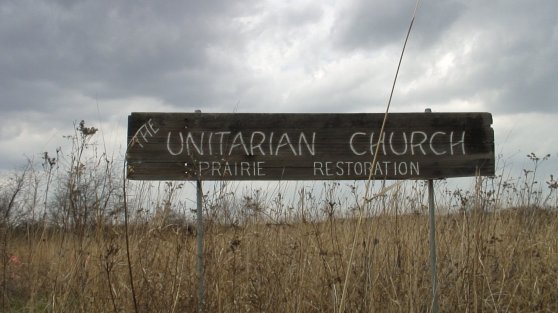Back in the early 1960’s, Unitarians in Rockford were scouting locations for a new church building. One of the search committee volunteers noticed some native bluestem grasses growing along the edges of the property. Forty years later, if someone walks up the hill behind the UU Church of Rockford, there is a wide gap in the trees. Half an acre of prairie grasses rustle in the almost continual breeze.
Not that long ago – geologically speaking – Illinois was subsumed in an immense sea of grass that stretched to the foothills of the Rocky Mountains. In the 1830’s, a man named John Deere (yes, there was a real John Deere) invented a type of metal plow that could cut through the dense soil and over the next century almost all of Illinois was cultivated: corn and soybeans and finally boxy houses.
What settlers called “the prairie” was actually more than just a lot of grass. Even in Illinois, the prairie was subdivided into seventeen distinct types. Each type was literally packed with different species. Restored prairies can pride themselves on having a hundred different plant species in a single acre. Natural prairie was more than twice that.
The Clinton Administration turned over some 15,000 acres near Wilmington, Illinois, for tallgrass prairie restoration. It is the largest restoration project in the country, but thirteen years later the Midewin National Tallgrass Prairie is still a work in progress with decades of work to come. In the entire state, less than four square miles of original prairie survives, split up into an acre here and an acre there. Large species such as the bison haven’t been seen outside of zoos in Illinois since the 19th century. More than twenty smaller species are threatened or endangered. Even the so-called Common Barn Owl isn’t that common anymore.
The prairie was plowed under in the name of progress and cash crops. Ironically, sawgrass – a prairie plant – has been found to generate 50% more ethanol than a similar amount of corn. There is a path through the middle of the prairie project behind the UU Church of Rockford. Walking into the middle and kneeling down, one can almost imagine what the Illinois of the past might have looked like, or possibly a dream of its future.

